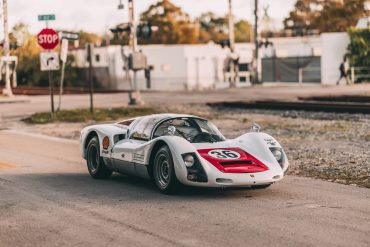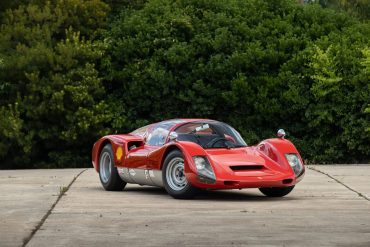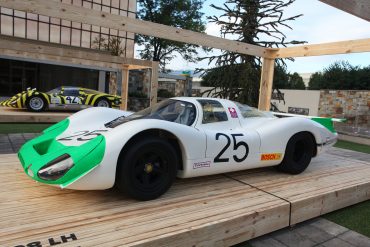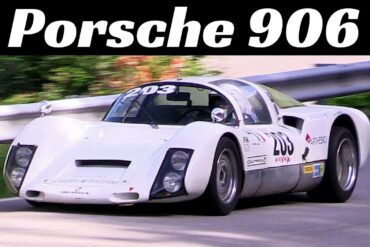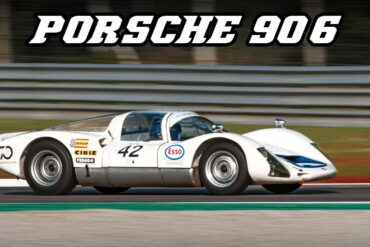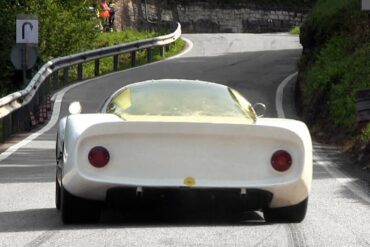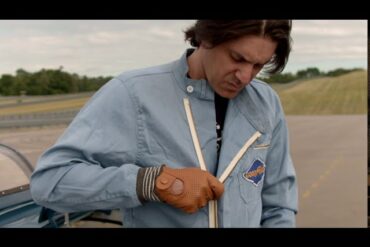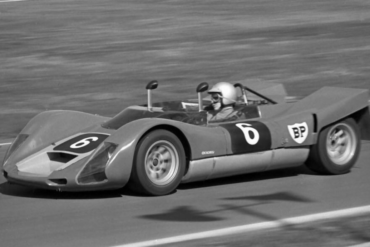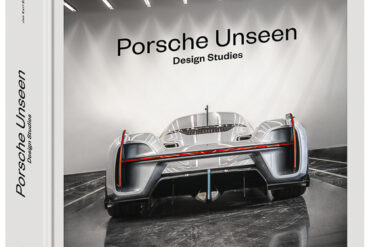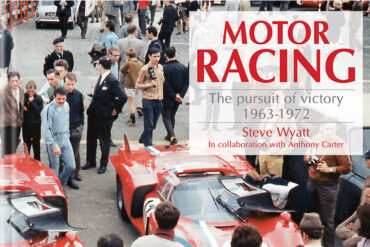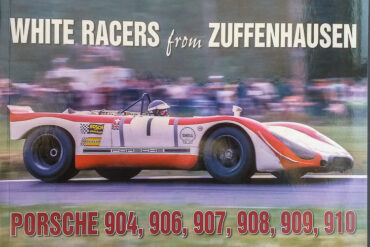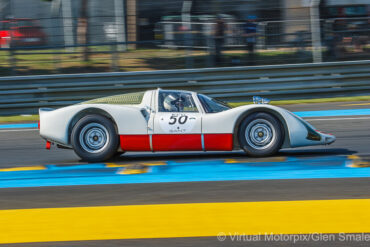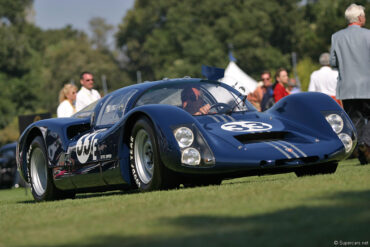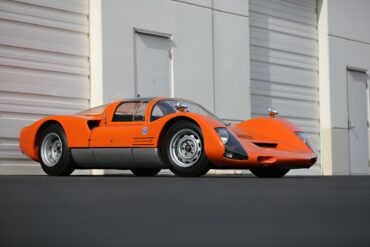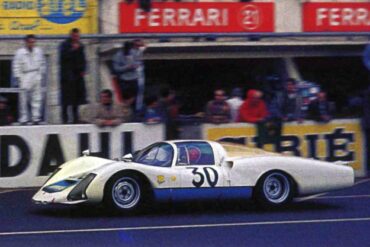If you have followed any previous Luftgekühlt events here on Stuttcars, you already know what a premiere Porsche lifestyle event...
Background Ferdinand Piëch, a grandson of Dr. Ferdinand Porsche, joined Porsche in 1963, determined to elevate his family’s firm to...
Going Global Luftgekühlt – the hit Californian-born gathering of air-cooled Porsches – lay down new roots in Europe in mid-June,...
Developed for endurance sports car racing, the 906 was a street-legal racing car that raced in the FIA’s Group 4...
Background In the Porsche world, “Luftgekühlt” represents all the air-cooled cars in the manufacturer’s history, from the Pre-A 356 through...
Setting the Scene The 1960s represented for Porsche, the busiest decade in the company’s history to date, with ten new...
If a picture is worth a thousand words, what is a video worth? Enjoy this throwback to 2023’s premier celebration...
The Porsche 906 or Carrera 6 was the last street-legal racing car from Porsche. A total of 65 were produced...
Organizers of the Chattanooga Motorcar Festival invited the Luftgekühlt’s celebration of Brian Redman, which resulted in a number of Porsches...
Words and photos by Dom Miliano Deeply devout people of all stripes live their lives hoping to, someday, visit the...
In the mid-1960s, as fuel injection systems swiftly replaced carburetors, Porsche enlisted Bosch to install a state-of-the-art slide-valve injection system...
Having just experienced the seventh Rennsport Reunion at Weathertech Raceway, Laguna Seca, it’s clear absolutely nothing would get in the...
After what felt like an eternity for Porsche enthusiasts, the seventh “family affair” of monumental proportions kicked off on the...
Porsche 906 Carrera 6 brutal sound!! This video I recorded in April this year during Porsche days 2010 at circuit...
1966 Porsche 906 Carrera 6 – Action & Pure Sound! I have filmed this wonderful 1966 Porsche 906, also called...
1966 Porsche 906 Carrera 6 – Hillclimb Action & Pure Sound! I have filmed this amazing 1966 Porsche 906 Carrera...
Porsche 906: Piëch to Peak Independence Pass is the second highest crossing of the Continental Divide in the United States...
Porsche 906 Carrera 6 at Nürburgring For the first time in nearly 10 years, this 1966 Porsche 906 got to...
Porsche 906 Stretching It’s Legs For the first time in nearly 10 years, this 1966 Porsche 906 got to stretch...
Porsche 906E Le Mans Classic Porsche 906E n°906-157 First of the four 906 fitted with injection engine, first race: the...
Porsche 906 Carrera 6 Pure sounds...
The 906 and Piëch’s lightweight revolution 29-year-old Ferdinand Piëch became the new head of Porsche Research and Development. His vision...
1966 Porsche 906 Carrera 6 Sound In Action On Hillclimb I saw this Porsche Carrera 6, or 906, during two...
Old Soul – The Ford v. Ferrari Porsche 906 A short documentary to bring out the old soul in us...
Porsche 906 Carrera 6 Specifications Specs 906 Coupé (homologation model) 906 coupe Engine: 6-cylinder boxer engine (four-stroke) 6-cylinder boxer engine...
Porsche 906 Spyder Specifications Specs 906/8 Spyder “Ollon Villars” Engine: 8-cylinder boxer engine (four-stroke) Displacement: 1981 cc Bore × stroke:...
Porsche 906 LH Coupé Specifications The 906 LH was capable of achieving 174 mph/280 km/h with its 2-litre engine (906...
Porsche 906/8 Specifications Four factory 906s received an air-cooled eight-cylinder boxer engine of the type 771, which was already used...
Porsche 906 E Specifications The technology in racing during the mid 60s was shifting from carburetors to fuel injection. Porsche...
Porsche Unseen by Jan Karl Baedeker & Stefan Bogner – © Delius Klasing Verlag Consider what it would be like...
Le Mans: The Official History 1960–69 by Quentin Spurring © Virtual Motorpix/Glen Smale This edition of Quentin Spurring’s fabulous series...
Motor Racing – The Pursuit of Victory 1963-1972 by Steve Wyatt © Veloce Publishing Limited The age of motorsport, when...
© White Racers from Zuffenhausen: Porsche 904, 906, 907, 908, 909, 910 In 2018, we reviewed one of the other...
Toine Hezemans in his Brussels home, 2015 One of the Netherlands’ most successful racers, Toine Hezemans is part of a...
Porsche 356 Carrera GTL Abarth on 05/07/2018 at the Le Mans Classic, 2018 Although the temperatures have hovered around the...
Goodwood 76th Members’ Meeting, 17/18 March 2018: #58 Porsche 935 K3 (1980) driven by Urs Beck in the Group 5...
The formidable Carrera 6 outside the Porsche headquarters, Stuttgart Zuffenhausen, 1966 The Carrera Six, as Porsche officially called the 906,...
Mont Ventoux, 18 June 1967 – Rolf Stommelen won this hillclimb driving a Porsche 910/8 Bergspyder Rolf Stommelen was one...
The technology in racing during the mid 60s was shifting from carburetors to fuel injection. Porsche began experimenting and the Bosch injection system proved to be the most reliable. Though the performance did not increase, it did provide superior throttle response over the Weber carburetors, and it was easier to tune. To compliment the new engine, a new body was created which reduced drag levels. Porsche dubbed the resulting car, with its new engine and body work, the 906E, with the 'E' representing 'Einspritzung, or injection.
Developed for endurance sports car racing, the 906 was a street-legal racing car that raced in the FIA's Group 4 class against cars like the Ferrari Dino 206 P. They often won their class behind the much larger prototypes such as the Ford GT40 Mk II and Ferrari 330 P3/4. Based off the same principles as the 904, the 906 used a boxed steel chassis with a fiberglass body that added rigidity to the design. The greatest success of the Porsche Carrera 6 "Standard" was undoubtedly the victory at the Targa Florio 1966.
Four factory 906s received an air-cooled eight-cylinder boxer engine of the type 771, which was already used in the 904/8. The engine had a displacement of 2.2 liters with a compression of 10.2: 1 and vertical shafts that drove the two overhead camshafts per cylinder bank. The maximum output was 198 kW (270 hp) at 8600 rpm. All vehicles were equipped with a five-speed manual transmission of the type 906 and a ZF limited-slip differential . The gear ratios could be exchanged as required without removing the gear.
The 906 LH was capable of achieving 174 mph/280 km/h with its 2-litre engine (906 K: 165 mph/265 km/h). At high speed the long tail started to create lift (opposite to downforce), which made the car go fast on the straight, but was dangerous to drive. At Le Mans, the 906 LHs with their experimental bodies competed in the 2-litre prototype class.
A spider body was fitted, and its inaugural appearance was at the Swiss Ollon-Villars hillclimb where it was met with disappointing results that were clearly to-do with poor testing and rushed development. The Ferrari's easily dominated the event and sent Porsche and their ''Ollon Villars Spyder' back to the drawing-board.





